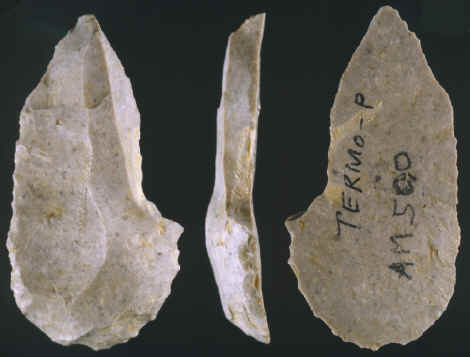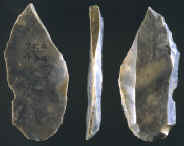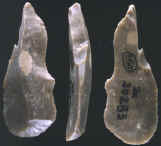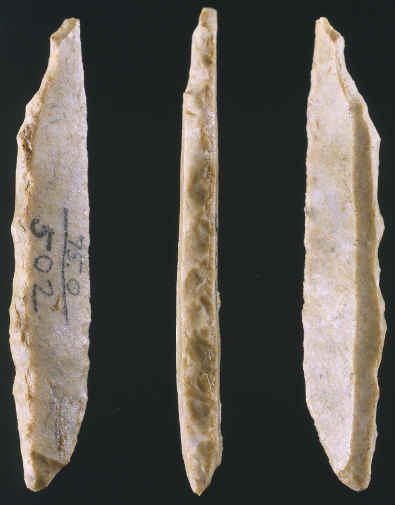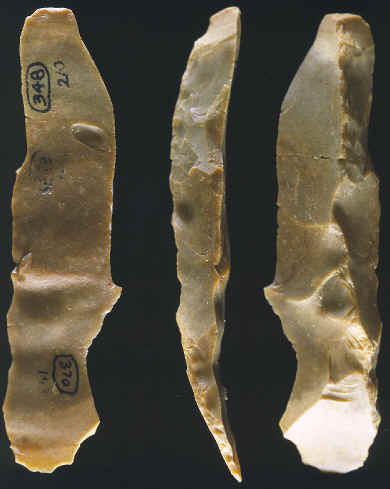|
||
|
The climate during the Upper Paleolithic Aurignacian period was very cold and dry. Ice sheets a mile or more thick came as far south as mid-Germany and south Britain. It seems remarkable that these early modern humans were able to develop so rapidly in such a harsh climate. Some of the terms used to label this period in Europe are the Ice Age, the Upper Paleolithic and the Late Stone Age. |
||
|
Aurignacian people were hunting and eating cold climate herd animals such as reindeer, mammoth, woolly rhinoceros, steppe horse, and bison. Engraved images of these animals begin to appear on bone and ivory. Much of that engraving was done with various types of burins. |
||
|
The Aurignacian also produced what is believed to be early forms of calendars. This interpretation was made by Alexander Marshack who has studied hundreds of notched, scratched and decorated artifacts made of bone, ivory and stone. These objects have been found in all layers of the Upper Paleolithic. |
||
|
"REFERENCES"
1970, "Tools of the Old Stone Age," by Jacques Bordaz. |
||
